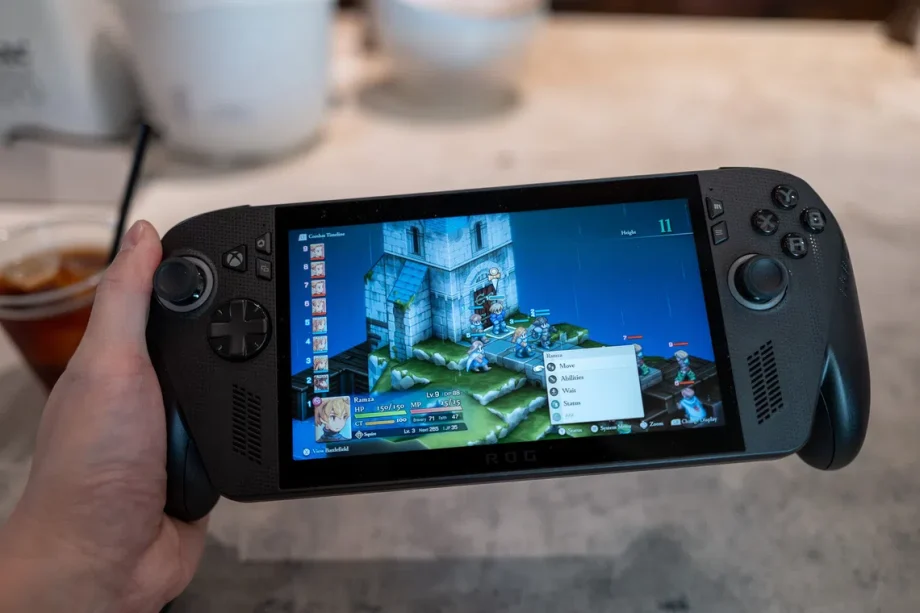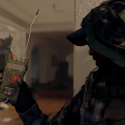It’s only October, but 2025 already feels like the year handheld gaming finally grew up. The Nintendo Switch 2 is finally here (albeit without a killer launch title just yet), Lenovo’s Legion Go 2 is now on shelves, and ASUS has returned to the fight – this time in collaboration with Microsoft – with the ROG Xbox Ally X. The Xbox in its name isn’t just for show. ASUS and Microsoft co-developed this handheld from the ground up, making it the first Windows gaming device to officially carry Microsoft’s badge.
The original ROG Ally – and the later non-Xbox Ally X – proved there was real appetite for full-Windows handheld gaming. But they also exposed the mismatch between Windows 11 and small, battery-limited devices. Microsoft’s desktop OS was never designed for handhelds; its cluttered interface, legacy background processes and general bloat slow things down and drain power faster than it should. Valve’s game-first SteamOS, by comparison, has shown what a purpose-built system can achieve, offering better battery life, higher frame rates and a smoother handheld experience on the Steam Deck.
The ROG Xbox Ally X, then, feels like ASUS and Microsoft’s response to those lessons – a chance to make Windows handheld-friendly without losing the openness that makes it appealing in the first place. This time, the Xbox integration feels native and not bolted on. Upon booting up, the hanheld brings you straight into an Xbox-first interface, putting your Game Pass library, cloud-streamed titles and Xbox collection front and centre, while still giving you full access to Steam, Epic, and even emulators. Microsoft’s influence also extends to the physical design, with a layout clearly inspired by its own Xbox controllers.
|
ROG Xbox Ally X specifications |
|
|
Dimensions |
29.0 x 12.1 x 2.75 ~ 5.09 cm |
|
Weight |
715g |
|
CPU |
AMD Ryzen AI Z2 Extreme Processor 2.0GHz (24MB Cache, up to 5.0GHz, 8 cores, 16 Threads); AMD XDNA NPU |
|
RAM |
24GB LPDDR5X |
|
Storage |
1TB PCIe 4.0 NVMe M.2 SSD (2280) |
|
Display |
7-inch FHD (1920 x 1080) 16:9 IPS-level Glossy display sRGB: 100% Adobe: 75.35% Gorilla Glass Victus Gorilla Glass DXC Touch Screen (10-point multi-touch) Refresh Rate: 120Hz Brightness: 500 nits AMD FreeSync Premium (Variable Refresh Rate) |
|
Ports |
1x 3.5mm Combo Audio Jack 1x USB 3.2 Gen 2 Type-C support DisplayPort™ / power delivery 1x Type C support USB 4 (Thunderbolt™ 4 compliance, DisplayPort™ 1.4 with Freesync support, Power Delivery 3.0) 1x UHS-II microSD card reader (supports SD, SDXC and SDHC) |
|
Wireless Connectivity |
Wi-Fi 6E(802.11ax) (Triple band) 2*2 + Bluetooth 5.2 |
|
SRP |
$1,299 |
Under the hood

The ROG Xbox Ally X was a great gaming companion during my recent holiday in Japan.
Photo: HWZ
The biggest changes, however, lie beneath the surface. ASUS has moved to the new AMD Ryzen AI Z2 Extreme, replacing the older Z1 and Z1 Extreme chips from previous Ally models. Built on AMD’s Zen 5 architecture (the same as the fantastic desktop Ryzen 9 9950X3D processor) with RDNA 3.5 graphics and a dedicated NPU, this new APU promises faster performance, greater efficiency, and better thermal headroom for sustained gaming on the go.
Memory and storage also get a nice boost: 24GB of LPDDR5X-8000 RAM and a 1TB PCIe 4.0 SSD is now standard, almost doubling the configuration of the original Ally. Battery capacity has also climbed to 80Wh, matching the non-Xbox Ally X. The 7-inch Full HD 120Hz IPS display remains unchanged, but that’s not necessarily a drawback. While I know some might have hoped for an OLED upgrade at this price, sticking with IPS makes practical sense in my opinion. The panel here is already bright, colour-accurate and responsive, and unlike OLED, it doesn’t draw as much power. For a handheld that’s focused on lasting longer between charges, I think that’s more than a fair trade-off.
The real question, of course, is how all this translates into daily use. It’s one thing to have faster RAM and a new processor; it’s another to feel those gains when you’re gaming on the MRT or lounging at home.
Design and Ergonomics

I would have preferred the audio jack to be at the bottom of the handheld.
Photo: HWZ

At 715g, it’s not what I would classify as “heavy”.
Photo: HWZ
Pick it up and you’ll immediately notice how much better balanced the Xbox Ally X feels compared to its predecessors. The weight distribution has shifted slightly toward the centre, reducing the “front-heavy” feel that made the earlier Ally tiring to hold after long sessions. The side grips are chunkier and more contoured now, shaped more like an Xbox controller, which makes a big difference for comfort, and very familiar to Xbox controller users. ASUS has clearly taken user feedback to heart – the subtle grip texture, deeper triggers and thumbsticks all make the device feel more natural in your hands.
Build quality has also improved. Gone is the slightly creaky plastic shell; the new chassis feels sturdier, with fewer flex points and simply a more premium finish. The buttons and triggers are tighter and more tactile, and the refined D-pad pivot feels great for 2D games. Even the ABXY buttons and feel are straight out of the same design book as the Xbox controller.

The ROG Xbox Ally X has great ergonomics for a gaming handheld.
Photo: HWZ

There’s minimal RGB here.
Photo: HWZ

There’s no mistaking ROG took design cues from Microsoft’s Xbox Wireless Controller.
Photo: HWZ
Thermals have been reworked as well. It’s not pin-drop silent for sure, but the fan noise is smoother and less whiny under load when compared to the original Ally. ASUS says the vapour chamber cooling system helps the Ryzen AI Z2 Extreme sustain higher boost clocks for longer, and for the most part, that seems to be accurate as I have not seen frame-rates fluctuating abnormally due to thermal throttling.
As far as ports are concerned, there are two USB-C ports, a microSD slot and a 3.5mm headphone jack right at the top. I would have personally preferred to have the headphone jack at the bottom of the handheld for better cable management but that’s just me. ASUS has also dropped the proprietary XG Mobile port, which may disappoint those hoping to hook up an external GPU, but it does simplify the design and the space saved could serve to improve internal airflow. I’m also not convinced gamers would want to tether their gaming handhelds to an external GPU.
Gaming performance
With the new Ryzen AI Z2 Extreme under the hood, the ROG Xbox Ally X promised better speed and stability – and for the most part, it delivers. Across my gaming tests at 1080p Medium settings, the handheld consistently outperformed both the original Ally and the non-Xbox Ally X.

The higher the fps, the better.
Image: HWZ

The higher the fps, the better.
Image: HWZ

The higher the fps, the better.
Image: HWZ
Across titles like Cyberpunk 2077, Horizon Zero Dawn and Shadow of the Tomb Raider, the performance uplift isn’t drastic but steady. What’s more noticeable is how well the Xbox Ally X sustains that performance over time. As I mentioned earlier above, I didn’t encounter thermal throttling or loud fan whine that impacted my extended gaming sessions.
While I didn’t benchmark a huge number of games, these three represent a solid spread across genres – from open-world shooters to RPG adventures. Beyond benchmarks, I also spent time on the recently released Final Fantasy Tactics: The Ivalice Chronicles and Sega’s Shinobi: Art of Vengeance, both of which felt perfectly suited to the Xbox Ally X’s form factor. Strategy and side-scrolling action titles, especially, shine on this handheld and both games look crisp, load fast, and feel right at home on a portable that’s easy to pick up and play anywhere.
Battery life
The golden question for any handheld gaming PCs. Battery life has always been the Achilles’ heel of handheld gaming PCs, but the ROG Xbox Ally X finally feels like a proper step forward.

The higher, the better.
Image: HWZ
In PCMark 10’s Extended benchmark, the Xbox Ally X ran for about nine and a half hours in Modern Office and close to three hours in the gaming test. That’s more than double what the first ROG Ally managed, and enough to make it one of the longest-lasting Windows handhelds I’ve used. Of course, benchmarks only tell part of the story. Actual battery life depends a lot on what you’re playing – Cyberpunk 2077 drains it faster than Final Fantasy Tactics ever will. I definitely found myself plugging the Xbox Ally X less often to a power source than the earlier Ally handhelds
What’s interesting is that this improvement doesn’t come purely from a bigger battery. The new Ryzen AI Z2 Extreme might not show huge leaps in raw performance, but it’s noticeably more efficient and scales down smartly when you’re not pushing it hard. The IPS display probably helps too; while they might not have the same inky blacks as OLED, they are far kinder on battery life.
Final thoughts

Windows 11 still isn’t perfect for gaming on the go. But the ROG Xbox Ally X brings the OS one step closer to that dream.
Photo: HWZ
If last year’s ROG Ally felt like an experiment, the Xbox Ally X is the version that finally sticks the landing. It’s still not the easiest handheld to live with, but it’s the one that makes the Windows handheld dream feel believable to me – powerful, portable, and finally, practical.
But let’s be honest: not everyone needs a handheld like this. The Xbox Ally X isn’t aiming to replace your Switch 2 or your console at home. It’s for a different kind of player – someone who already lives in the PC ecosystem, has a Steam or Game Pass library full of half-finished titles, and likes the idea of picking them up on the go without starting over. It’s for the gamer who doesn’t mind the occasional driver update or Windows quirk if it means having full control over what they play and how they play it.
The Switch 2, on the other hand, still nails what Nintendo does best: simplicity, instant fun, and that family-friendly magic that’s impossible to replicate. The Ally X isn’t competing with that; it’s catering to the other end of the spectrum — the tinkerers, the hobbyists, the PC die-hards who prefer freedom over convenience.
Price, though, is where reality bites. At S$1,299, the Ally X sits firmly in premium territory. It’s pricier than a Switch 2 and a good chunk above what the original Ally cost at launch. You’re paying for refinement — better ergonomics, smarter thermals, and a system that finally feels confident in its identity — but it’s still a significant spend for a niche device.
That said, I’ve come away impressed. The Xbox Ally X might not convert console gamers, but it finally gives PC gamers a handheld that feels worth carrying around. It’s not perfect, but it’s finally coherent — a portable Windows machine that knows exactly who it’s for.
The ROG Xbox Ally X is available for S$1,299 at ASUS’ authorised retailers and its e-Store. Click here to buy.






